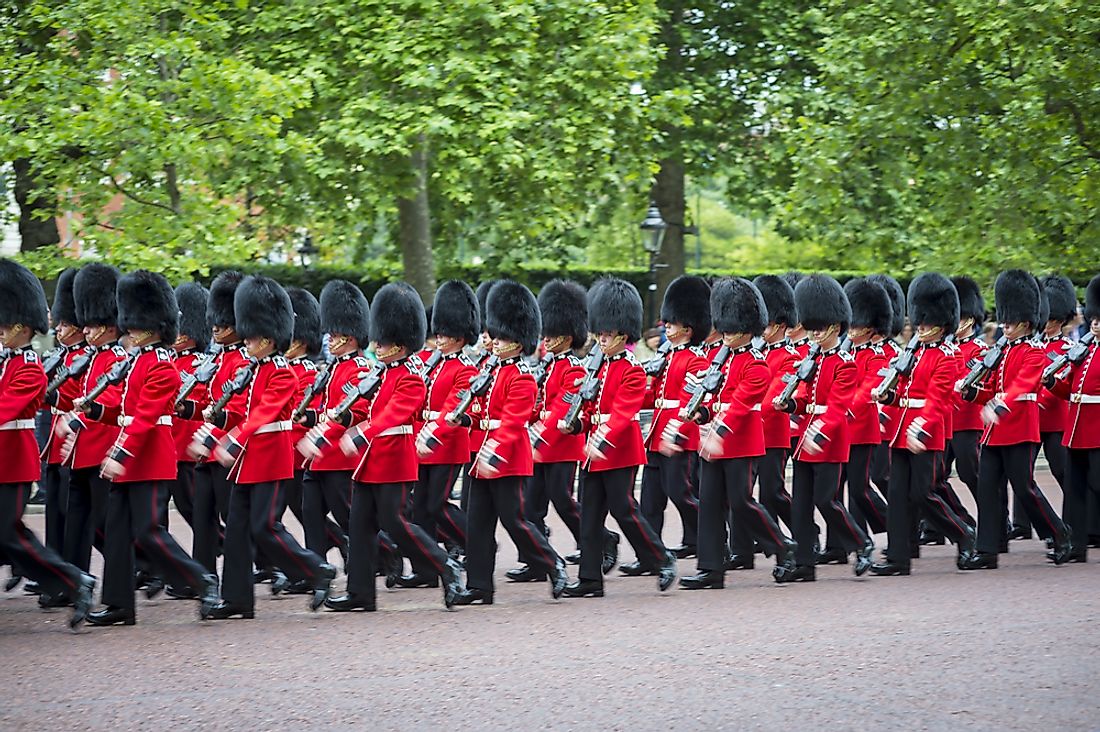What is Trooping the Colour?

“Trooping the Colour” ceremonies have been a tradition of the British forces from as early as the seventeenth century. Several countries within the Commonwealth realm and those who have a historical relationship with Britain have adopted this tradition with few modifications. These countries have either adopted the ceremony as it is in the UK or tweaked it to fit their national celebration needs. From the mid-eighteenth century to date, the ceremony marks the official but not actual birthday of the British sovereign. This day currently falls on a specific Saturday in June each year and gives the Queen an opportunity to inspect her personal troops, the Household Division, in an event that brings together a parade of 1,400 officers, 400 musicians, 200 horses, and a fly-past among others.
The Procedure and Organization
In early military practices from where Trooping the Colour gets its foundations, capturing enemy regimental colors were a great honor as opposed to losing a color which meant a defeat. In today’s event, rehearsals begin in early April and pass through two reviews, one from the Major General and the other from the Colonel in charge. These rehearsals occur in full ceremonial dress and the reviewers take the salute at the time.
On the day of the ceremony, the guards start by flying the Royal Standard from Buckingham Palace and the Horse Guards Building whereas public buildings fly the flags of the British Commonwealth of Nations and the Union Jack. The Escort to the Colour (Number one Guard) and other foot guards form an L-Shape resembling the "hollow square" defensive formation. Another group of participants is the mounted troops and the Sovereign’s Escorts who include the Blues and Royals (Royal Horse Guards and First Dragoons), the Household Cavalry Mounted Regiment (Life Guards), and the King's Troops. In a line along the edge of St. James’ Par is the Royal Horse Artillery from whom a division will ride in front of the Queen’s carriage and another at the back. Also, important on the day, are the drill-giving Commanding Officers who include the Lieutenant Colonel, Major, and Adjutant. Lastly, the last set of participants are 200 military bands from the Household Division and over 400 musicians.
The Parade
First, the Royal Family arrive in barouches and climb to the balcony of the Horse Guards Building, formerly the office of the Duke of Wellington, from where they view the parade. After they settle, the Colonel-in-Chief (the Queen) and the Colonel of the Grenadier Guards (Duke of Edinburgh) enter the glass coach and journey from Buckingham Palace down the Mall. Escorting them in front is the Sovereign's Escort while at the back there are four Royal Colonels who are the Prince of Wales (Welsh Guards), the Duke of Cambridge (Irish Guards), the Duke of Kent (Scots Guards), and the Princess Royal (Blues and Royals). Behind this royal procession is the non-royal colonels, Master of the Horse, and a Major-General who commands the Household Division and several other military officers.
The ceremony starts with the national anthem (God Save The Queen) after the Queen and Duke of Edinburgh alight. The parade then conducts slow and quick march times as the Queen inspects the Foot Guards, the Household Cavalry, and King's Troops in each of the march pasts. On completion, the Queen takes the Royal salute followed by the “troop” musical from the band. As the music plays, the Regimental Colour passes down the ranks. Once the display is over, the Queen and Duke of Edinburgh ride back to Buckingham Palace where together with the Royal family, they view the fly-past as the troops return to their respective barracks.
Trooping the Colour Ceremonies in Other Countries
Australia, a member of the Commonwealth realm has been conducting this ceremony since 1956, normally on the Queen's Birthday Holiday. Canada also conducts the ceremony mostly on Remembrance Day or Victoria Day during the Queen’s birthday. Kenya remains the only African country that has a similar ceremony, although not for the Queen’s Birthday but to celebrate the country’s independence and self-rule. This country conducts the ceremony on December 12, Jamhuri Day. Malaysia also conducts the ceremony every first Saturday of June each year to mark the official birthday of the Yang di-Pertuan Agong.











